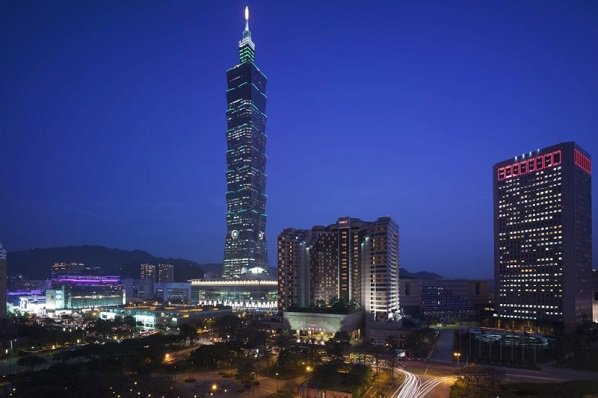This post may contain affiliate links. We may earn money or products from the highlighted keywords or companies or banners mentioned in this post.

Twenty-five years after opening as the first, true international luxury hotel in the capital, the Grand Hyatt Taipei is on the verge of yet another debut as one of the most sophisticated, urban hotels in East Asia.
The Grand Hyatt Taipei is celebrating its re-launch April 23rd after a top-to-toe renovation that fleshed out the hotel from its concrete bones.
Each of the property’s 853 rooms and suites was stripped to the fundamentals, redesigned and rebuilt.
“With this re-launch, in terms of rooms and restaurants, we’re now a brand new property,” said Kai Speth, the hotel’s general manager.
“But with a 25 year history in this same location, we’re also the most seasoned hotel in the city.
“We’ve got the best of both worlds.”
Baths clad in half-square-meters of marble, sophisticated lighting, muted colours, goose down duvets, deep-soaking tubs, ample windows, textured walls, suites that feel like apartments, and rooms that elicit surprise and a wow from guests are hallmarks of the Grand Hyatt’s brand new day in Taipei.
The hotel’s guest rooms range in size from 33 and 40 square meters at the grand deluxe level to more than 83 square meters in an executive suite.
The new presidential suite commands more than 221 square meters and offers up storybook views of the iconic Taipei 101 Tower.
Beyond the rooms, the all new Grand Hyatt Taipei is trumpeting two completely new restaurants, a Chinese restaurant, Yun Jin, and a Western venue, The Steakhouse, each a completely new concept and a ground-up build.
Yun Jin’s debut was in February.
Work on the Steakhouse begins later this year.
Likewise, the Club Lounge is an all new experience.
High counters cultivate opportunities for convivial breakfasts with fellow travellers while window-side alcoves preserve a certain measure of privacy.
A new, open show kitchen whets appetites for Eastern and Western comfort food all morning long.
As a complement to the hotel’s substantial changes in hardware, its software has undergone a similarly dramatic transformation as the property asserts itself as a happening hub.
The new, less formal vibe at the hotel is evident at check-in.
Where hotel staff once greeted guests from one side of a high, grandiose counter, staff and guests gather at any of five low slung desks for a less officious introduction.
“It’s much less of a ‘you and I’ experience,” said Speth, “and much more of a ‘we’re all here together.’
“These are very subtle gestures, but a hotel relies on its mostly finely tuned details to create its most memorable effects.”
Beyond check-in, the lobby replaced its souvenir shop with Baguette, a bakery and gift shop designed to stimulate more social interaction as guests resort to a new seating area.
Where a business centre catered to men and women at work, a new retail shop invites more casual interaction.
What hasn’t changed in the lobby is its grandeur.
The elegant space remains the only grand lobby in Taipei.
In front of the hotel, a dramatic pruning has pared back a certain cultivated guardedness and opened up the hotel to casual inspection and passive invitation.










